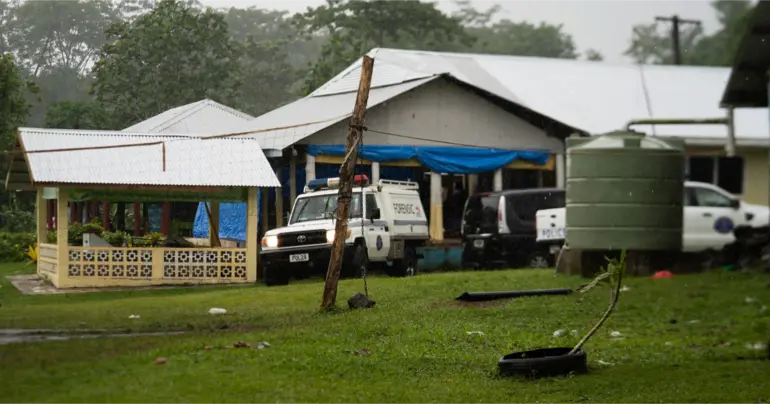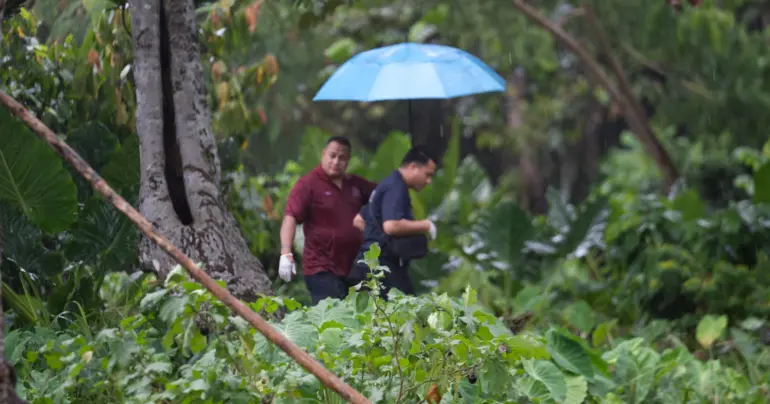Airport Manager responds to Ti'avea concerns
 By Mata'afa Keni Lesa
•
25 August 2020, 8:30PM
By Mata'afa Keni Lesa
•
25 August 2020, 8:30PM
The General Manager of the Samoa Airports Authority (S.A.A.), Silimana’i Ueta Solomona Jr, says the $17 million Ti'avea Airport was “never designed” to service a Boeing 737-800 aircraft.
Responding to questions about the legitimacy of the project being called an international airport, as well as a back-up to the Faleolo International Airport, Silimana’i said Ti’avea is a “Code 2C aerodrome” whereas Faleolo is a “Code 4E aerodrome” - two completely different airports.
“Ti’avea Airport was never designed or intended to service a Boeing 737-800 aircraft,” Silimana’i said in a statement issued by S.A.A.
“As identified in the Authority’s Master Plan and part of Government’s plans to provide Samoa with easy access to all modes of transport, Ti’avea Airport was determined to be a Code 2C aerodrome.
“For comparison, Faleolo International Airport is a Code 4E aerodrome while ex-Fagalii, Maota and Asau are coded as 2A type aerodromes. These reference codes signify the types of aircrafts which can / cannot use a particular aerodrome.”
The statement from the Authority was in response to a story titled “Ti'avea Airport falls short; makes no sense" published on the front page of the Weekend Observer.
The story revealed that the Tiavea Airport is currently far from meeting international length standards required of an international runway.
A Samoa Observer investigation used a photographic drone to measure the length of the cleared runway at the site as only 956 metres.
Even if previously promised plans in April to extend the airstrip a further 600 metres were realised, it will still fall well short of international standards for safe landings for large passenger jets including those owned by the national carrier, the Samoa Observer investigation found.
The findings were backed by international and locally-based aviation experts who expressed concerns about safety and the length of the runway.
But the General Manager of S.A.A. dismissed the concerns, saying Ti’avea is not being built to replace Faleolo.
“As such, the critical aircraft being catered for are the De-Havilland Twin Otter (same as that operated by Samoa Airways), Aero-Commander series aircraft (same as that operated by Talofa Airways) and future proofing for larger turbo-prop aircraft such as the Dash-8 or ATR series of aircraft,” he said.
“In relation to expert comments on the need for ground-based navigation aids, Air Navigation has moved on from the old days, with Satellite Based technology replacing the need for conventional navigation aids. These are in the form of Required Navigation Performance (RNP) and Area Navigation (RNAV) approaches that enables an aircraft to land without ground guidance.”

The following is the S.A.A’s response in full:
25th August 2020
TIAVEA AIRPORT DEVELOPMENT
MONDAY 24th AUGUST, 2020
1) In response to an article published by the Samoa Observer of Saturday 22nd August 2020, the Samoa Airport Authority (‘Authority’) has the following statement.
2) As identified in the Authority’s Master Plan and part of Government’s plans to provide Samoa with easy access to all modes of transport, Ti’avea Airport was determined to be a Code 2C aerodrome. For comparison, Faleolo International Airport is a Code 4E aerodrome while ex-Fagalii, Maota and Asau are coded as 2A type aerodromes. These reference codes signify the types of aircrafts which can / cannot use a particular aerodrome.
3) As such, the critical aircraft being catered for are the De-Havilland Twin Otter (same as that operated by Samoa Airways), Aero-Commander series aircraft (same as that operated by Talofa Airways) and future proofing for larger turbo-prop aircraft such as the Dash-8 or ATR series of aircraft.
4) Ti’avea Airport was never designed or intended to service a Boeing 737-800 aircraft. In relation to expert comments on the need for ground-based navigation aids, Air Navigation has moved on from the old days, with Satellite Based technology replacing the need for conventional navigation aids. These are in the form of Required Navigation Performance (RNP) and Area Navigation (RNAV) approaches that enables an aircraft to land without ground guidance.
5) Stage 1 will comprise a single 800 x 30-meter runway, taxiway and apron parking space for 2 code 3C turbo propeller aircraft. Stage 1 of the airport is anticipated to be completed in February 2021.
6) Stage 2, which has been delayed for future construction will extend the runway by a further 600 meters for a total length of 1400 meters.
7) The Authority are working with the relevant Government Ministries and Corporations to secure the land earmarked for the expansion in stage 2 of the development and has support from the main Utilities to provide all services required by an airport and the Community at Ti’avea.
Faafetai,
(Silimana’i Ueta Banse Solomona Jr)
GENERAL MANAGER
 By Mata'afa Keni Lesa
•
25 August 2020, 8:30PM
By Mata'afa Keni Lesa
•
25 August 2020, 8:30PM











